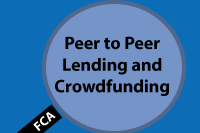
If you Google ‘financial investing terms’, there are numerous lists covering everything from asset allocation to Internal Rates of Return, but one term noticeably absent across all these lists is ‘Transparency’.
It’s a simple well understood word implying openness, communication, accountability and operating in such a way that it is easy for others to see what actions are performed. Transparency should be forefront of any investors minds before they part with their hard earned cash but for decades investments simple and complex have hidden behind an opaque veneer.
Investors have that comfortable feeling when their salary is paid into their bank account every month, the vision of their cash gathering dust in a vault, waiting for them at any point to draw out but nothing could be further from the truth.
The moment the funds hit the banks systems, the bank pools all the cash and decides where the money is allocated, whether to trading foreign exchange, underwriting corporate IPO’s or investing into derivatives of derivatives.
We all live under the illusion that we can walk into a bank tomorrow and withdraw all our money from our current and savings accounts but nothing could be further from the truth. If you have more than £10,000 savings, go and try it and see how easy it is. There is a total lack of transparency with the banks, in whose trust, we place our most prized possession, cash.
The film, The Big Short, based on a Michael Lewis book, shone an industrial sized beacon on a global financial industry firmly built on a total lack of transparency and understanding of all participants. From the man in the street, the financial institutions involved, the rating agencies right up to the Federal Reserve and the industry regulators. The guys who made the real money had to dig deep to find the transparency.
Out of the ashes of the 2008 financial crisis emerged a new industry, Peer to Peer (P2P) or Marketplace lending. On paper, as with so many great ideas, it’s a really simple and solid concept.
One on side of the market you have cash rich investors looking for yield, as global interest rates crashed and on the other side you have borrowers looking for loans, where the banks had retrenched.
The P2P platform acts as the digital dating agency which brings them together, an eBay for money if you will. It’s a win-win for both parties and most importantly, in theory, it offers total transparency. Investors know who they are lending to and borrowers know who they are borrowing from.
Unfortunately, as with many great industries, the simplicity and transparency of peer to peer lending has started to fog over but this time the Financial Conduct Authority (FCA), the industry regulator, has spotted it.
Interestingly, in their recent post regulation implementation review, there is less focus on the quality of the borrowers and underlying loans and more on how the platforms actually operate. The FCA is rightly concerned and focused on the following issues;
- regulatory arbitrage, where platforms offer P2P investment products which increasingly look like banking products but without the appropriate banking licence. This is where an investor invests into a time based deposit structure, the investor for example may receive 4% interest per year for a period of 3 years. The investor then has no say to whom, for what purpose, for how long and at what rate their money is lent out. There is no transparency.
- a broader pooling of credit riskthrough the creation of provision funds, which may mean that the platform is now operating a collective investment scheme for which they do not have appropriate regulation. When the funds are pooled, there is little hope of transparency for the individual investor, as to what they actually have recourse to.
- maturity mismatches, where an investor invests money for 3 years and that money is then allocated to a 5 year loan. There is no transparency as to how the investor will have his investment returned after 3 years?
As this market slowly matures, it will more than likely hit a few speed bumps along the way. Therefore platforms need to be as transparent as possible with both investors and borrowers to ensure that we can shut down the naysayers, prove that peer to peer and marketplace lending is worthy of dropping the name ‘alternative’ and become a mainstream finance product.


